"Trials for witchcraft was an important element of the everyday life of Poles" - says prof. Crooked. His book "Don't Let Witches Live" has just been published.
Anna Baron-Jaworska:Where did you need to write a book on witchcraft trials in Poland?
prof. Jacek Wijaczka: I wanted to show readers that the witch hunt and witch trials in early modern Poland was not a trivial problem, but an important element of the everyday life of our ancestors in the 16th-18th centuries. social . It had a very strong influence on everyday interpersonal contacts. The activity of witches was used to explain the misfortunes of everyday life, their own or a child's illness, the biting of a cow or a horse by wolves, a plague of sheep or a violent storm that knocked down the barn. You had to explain your personal misfortune somehow, and this one was the simplest. At the same time, I would like to point out how many myths and stereotypes are associated with witchcraft trials, hence, among others, text about Barbara Zdunk.
It is said that witches were not burned in Poland, and certainly not on the same scale as in Western Europe. In your opinion, is it only a result of difficulties in the availability of source materials? But is there something more?
It is not, in my opinion, related to the availability of source materials. Although it is a fact that the sources concerning the course of the witch and sorcerer hunts in Poland and the files of the trials have generally not been preserved too much . During World War II, for example, the city books of many towns in Małopolska were burned. Books containing information on witchcraft accusations and trials. The preserved trial files are also very often incomplete. Even the interrogation protocols are missing.
The conviction that there were no pyres in Poland results primarily from the narrative of exceptional tolerance in the former Polish-Lithuanian Commonwealth, conducted for decades, and resulting from the so-called noble democracy. This narrative was included in the book by Janusz Tazbir, published for the first time in 1967, entitled “A state without heaps. Sketches on the history of tolerance in Poland in the 16th and 17th centuries.
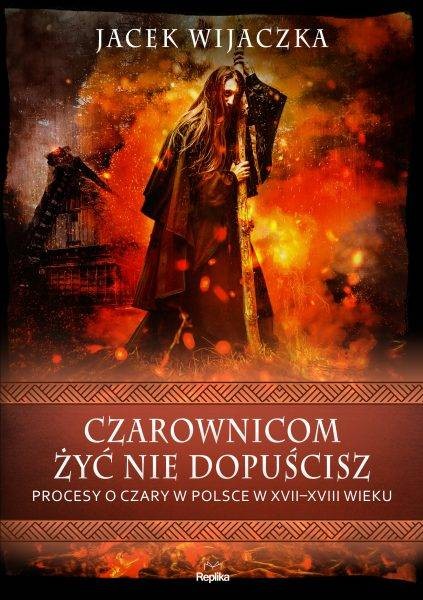
Professor Jacek Wijaczka, an authority in this field, in the book “You will not let witches live. Trials for witchcraft in Poland in the 17th and 18th centuries "(Replika, 2022) shows eight cases of alleged Polish witches.
Although this work was devoted not to witchcraft trials, but religious freedoms in the Polish-Lithuanian state, it proved that, unlike the countries of Western Europe, Poland did not kill each other for religious reasons. It is forgotten, however, and in Tazbir's book, it did not resonate too strongly that in fact this "tolerance" concerned only representatives of the noble estate, thus only a few percent of the society.
In any case, the belief that there were no pyres in the Commonwealth was also extended to witch hunts . It was widely believed in, even though a dozen or so years earlier, in 1952, a book by Bohdan Baranowski on witch hunting in the Polish-Lithuanian Commonwealth in the 17th and 18th centuries had been published.> during witchcraft trials in Poland several thousand people were sent to the stake, mostly women . This work, however, did not make such a "career" among readers as Tazbir's book. Most of us prefer to believe that we were a unique society in early modern Europe, although at least 3,000 women in Poland ended up at the stake as alleged witches, partners of the devil. By the way, J. Tazbir's work is still being reprinted, recently also as an e-book.
What did you follow when choosing the examples of witch trials presented in the book?
First of all, I wanted to present processes that have not been discussed in the literature so far. Thus, the published texts are based on previously unused source material. In recent years, the history of women has aroused the interest of Polish historiography, but it is mainly the history of women from noble and magnate families that is studied. This is due to the state of preservation of the sources, but not only.
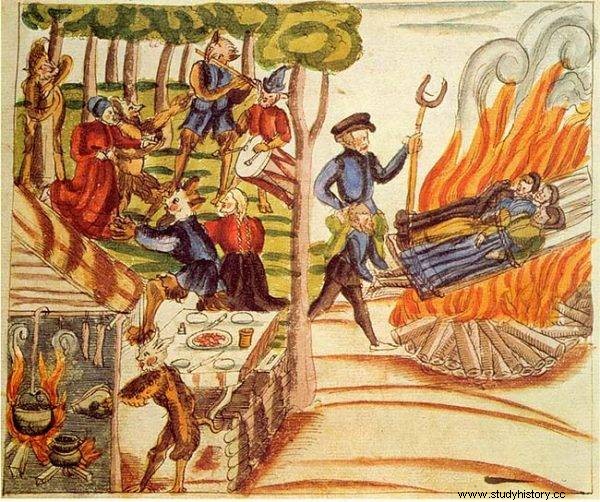
At least 3,000 women in Poland ended up at the stake as alleged witches, partners of the devil
So I wanted to show that the files of witchcraft trials allow us, among others, to learn about the fate of women living in villages and towns, not only in noble mansions and magnate palaces. It is, of course, a paradox that we can only get to know their lives because they have been tortured and burned . If they were not recognized as witches, we would not know anything about their lives, and so we can learn from the testimonies of witnesses and themselves, for example, about their life situation, family, neighbors, friends or property status (as in the case of Dorota Paluszka). We also get to know the belief system prevailing at that time, we learn how the judiciary worked, and we also see the operation of state power, or the lack of it.
Which process is the most memorable for you?
The most memorable process I do not mention in the book, but which I know from the literature on the subject. I mean the trial that was carried out in 1773 by the municipal court in Gostyń (Greater Poland). Franciszka Gołębiewska was tried as the alleged witch. She was accused of causing hail and rinderpest with the help of witchcraft . Since she did not want to admit the wrongdoing accused of her, she was subjected to torture. Since she would not say what the court had expected back then, the torture became more and more cruel. On September 3, 1773, she was to receive as many as 300 blows with a rod. She must have been in a terrible physical condition after that, since she was left alone until early October, when she was tortured again.
These repeated torments resulted in finding a small bag of oatmeal in her house and a jar of ointment. One of the women testified that the accused had used this flour to induce hail and pestilence, while the ointment was to be used for flying on a broomstick. The judge ordered the mixture of ointment and flour to be served in the sausage to be eaten by the dog. Although the dog's "dish" did not hurt, the accused was subjected to further torture, as a result of which at the end of January 1774, she died in prison. The court decided that the woman managed to clear herself of the charges against her, because she did not commit suicide, but died a natural [!] death wearing a rosary and a scapular around his neck.
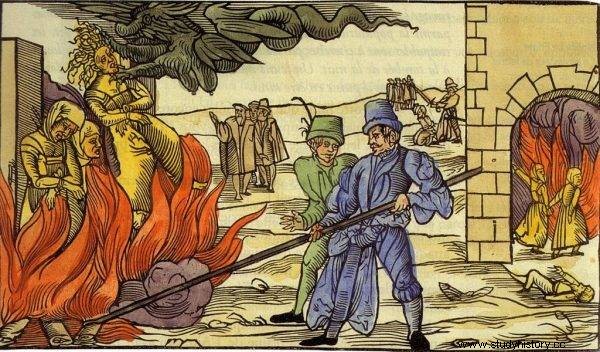
Theoretically, any person could be accused of being a witch or sorcerer.
Evasive argumentation, however, showing the way of thinking of the majority of the contemporary society in Poland at that time. People believed it, even though we now think they lived in the Age of Enlightenment. Let me remind you that the trial took place at the turn of 1773/74. For a long time I have the impression that the term Enlightenment is used exaggerated in the 18th century . I show it in one of the texts in the book about the events in the vicinity of Bytów at the end of the 18th century.
Do you think there was any model of people in Poland who could be accused of witchcraft?
Theoretically, any person living in the early modern times could be accused of being a witch or sorcerer. The belief in their reality was universal. In practice, the victims of the accusations and trials were mainly women - and they are peasants or townspeople. The witch hunt is primarily the domain of the rural environment (and agricultural towns) and of people working in agriculture. Noblewomen in Poland were practically not accused of witchcraft, incl. for the fact that they could not be tortured. So it was impossible to get an admission of guilt.
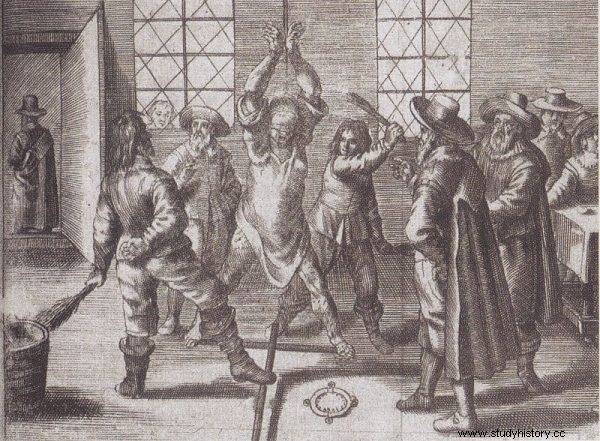
It is estimated that over 80% of the victims of witch hunts in Europe in the 16th-18th centuries were women.
It is estimated that over 80% of the victims of witch hunts in Europe in the 16th and 18th centuries were women. I would like to add that recent estimates show that during this period, by sentences in witchcraft trials, between 40,000 and 60,000 people lost their lives . Contrary to the stereotype, shaped mainly by fairy tales, the witch was usually not an old woman, toothless, tattered and with a shaggy hair, living somewhere on the sidelines of the settlement, in a collapsing shanty. Most often, middle-aged women were accused of witchcraft, very often having families, husbands and children. Of course, there were also old ladies and teenagers, but they were not dominant.
Do you think the witchcraft trials differed in any way from those carried out in other European countries?
No, witchcraft trials in Poland were conducted on similar principles as in other European countries. For all over Europe it was commonly believed in the existence of witches and sorcerers cooperating with the devil. Of course, the scale and chronology of the witch-hunt varied. In Poland, mass-scale processes began in the 1770s and continued with great intensity in the 18th century. In Western Europe, in the second half of the 17th century, witchcraft trials ended, although we also encounter them in the 18th century.
Trials in witchcraft cases were conducted in accordance with the then law enshrined in penal codes and according to a specific procedure. Accused persons were brought before secular courts, and in each case there had to be a prosecutor. Torture was used in all countries and it was also legal, sanctioned by the Roman Catholic Church as early as the late Middle Ages to bring out a confession. Outside England, where witches were hanged, condemned men and women were sent to the stake. Sometimes, by way of grace, the executioner was ordered to strangle the accused, but in such a way that the crowd would not find out. Dust bags were also hung around the neck to shorten the torment.
In your book you talk about the last witch burn in Europe, which took place in Reszel. On the basis of the sources quoted by the Lord, it is clear that this is a myth. Have you come across any other known stories related to this topic that are mistakenly believed to be true?
In my opinion, a similar situation as in Reszel takes place in Doruchów. For many years, the literature on the subject assumed that the last witchcraft trial in the Polish-Lithuanian state was carried out in August 1775 in Doruchów , a village in Greater Poland, in the Ostrzeszów poviat. At that time, 14 women, alleged witches, were to be executed there. However, no files of such a trial have survived, although at the beginning of the 20th century, Father Michał Perliński, a parish priest in Ostrzeszów, claimed that they were in the parish files in Doruchów. It is not certain, however, whether he saw these files himself, and whether they actually related to a trial carried out in 1775, or whether they were files from another trial, from a different year.
The files of witch trials conducted by the court in Ostrzeszów were to be included in the books of the head of the commune and the Soviet Union. The city books of Ostrzeszów have not survived , only extracts from them are known, kept in the State Archives in Poznań, which, however, do not contain any information on witchcraft trials . The account of the alleged witness of these events, published in the first half of the 19th century, is a fake, as Janusz Tazbir wrote about years ago. It remains an open question who fabricated this account.
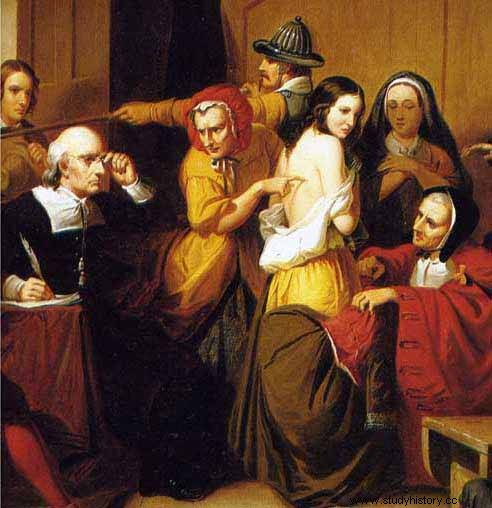
The last witch trial in the Polish-Lithuanian state was carried out in August 1775 in Doruchów
The Doruchic trial of 1775 still appears in historical works, and most of all it is in the common historical awareness of numerous Polish women and Poles. Information about him is available on the website of the Doruchów commune. The action of "Miasteczko" (Poznań 2020), a novel by Natalia Nowak-Lewandowska, takes place in this village, turning the village into a town for the purposes of the story, and locating it in the Łódź Voivodeship, not Greater Poland Voivodeship. She added:"However, the story of the witches from Doruchów is true," and she wove the information about the alleged trial into the narrative.
The alleged Doruchowo trial of 1775 is also the subject of Tomasz Kowalski's novel, "You will not let the witch live" (Krakow 2018). The author narrated this mysterious X. A. R., supposedly the nephew of Józef Możdżanowski, the parish priest of Doruchów, who tried to save the lives of fourteen women accused of engaging in witchcraft. Doruchów is sometimes called the "Polish Salem". On the Internet, this information can be found on so many sites that it would be difficult to list them all.
Most of the inhabitants of Doruchów believe that the trial in 1775 took place. They were confirmed in this belief by, among others archaeological research carried out in 1998–1999, during which a search was made for the place where the pyre on which the alleged witches were burnt . This place has reportedly been found. It is allegedly located on the road towards the village of Mikorzyn, near Łysa Górka. The pile was said to have dimensions of 4.8 x 3.6 m, and on it "11 women were arranged in two rows and crushed by thick oak logs" . A cross with a commemorative plaque has been placed on this site. Secondary school students prepared a performance that attracted residents from all over the county.
It should be noted, however, that finding the site of the pile from so many years ago is impossible. A dozen or so years ago, an experiment was conducted at the Neanderthaler Museum located in Mettmann (Germany), consisting in the preparation of a stack according to a design described by Johann Ernst Clausen, an executioner at Lemgo. A pile was built and a pig weighing 60 kg was burned on it. One of the results of this experiment was not only to find out that the burning took no more than an hour, but also that such a pile did not leave any permanent archaeological traces in the ground. So it cannot be found after two hundred years.
The witchhunt is largely regarded as the result of ignorance. It was also a need to find a scapegoat, especially when a given community was plagued by natural disasters and tragedies. In your opinion, are there also situations that can be considered the modern equivalent of witch hunting?
There is no need to look for a modern counterpart of a witch hunt, because witch trials are also ongoing, although to a large extent they are self-judgments or quasi trials. In 2021, in at least 41 countries, women, but also men and children, were accused, tortured and killed as alleged witches. The most numerous accusations were made in Congo, Papua New Guinea, India and South Africa. Similar acts of violence also occurred in Mexico and Guatemala. Africa dominates as a continent.
According to the German historian of witch hunts for years, Werner Tschacher, more alleged witches and sorcerers have lost their lives in the last 60 years than in the approximately 350-year European witch-hunt.

